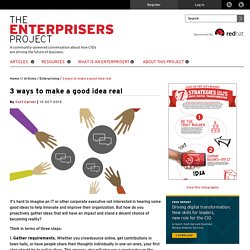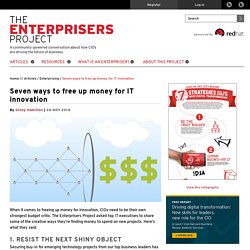

UK research chief 'will not direct science' Screen-reader users, click here to turn off Google Instant.

MoreEven more from Google Sign in All News Videos. Why the Higher Education and Research Bill must be amended. Buried in the 113 subsections and 12 schedules of the 2016 Higher Education and Research Bill that is currently before parliament are massive constitutional changes that will undermine the autonomy and vigour of Britain’s universities and its research base.

The issues are complex, and involve perturbations of the difficult balance of power, democracy, expertise, and academic freedom that will seem intangible to many. But institutions and processes that have been of demonstrable value to this country for decades and, in some cases, centuries, will be significantly eroded if this bill passes through parliament unamended. As it stands the bill envisages far-reaching changes to the organisation of universities and research. Of course, it is healthy to seek to review and improve how we do things, and the government has mandate to deliver manifesto commitments to introduce the TEF and the revamp of the research councils envisaged in the Nurse Review. Innovation@50X - Moving Companies at Startup Speeds - Steve Blank. By Steve Blank && Evangelos Simoudis, Corporate Innovation Ventures.
Today, large companies are creating innovation outposts in innovation clusters like Silicon Valley in order to tap into the clusters’ innovation ecosystems.

These corporate innovation outposts monitor Silicon Valley for new innovative technologies and/or companies (as emerging threats or potential tools for disruption) and then take advantage of these innovations by creating new products or investing in startups. Most CEOs assign the responsibility to establish and manage their innovation outposts (and the outpost’s relationships to startups) to their R&D organizations. While that avoids internal management conflict, it’s the wrong way to make an innovation outpost decision. From VentureBeat. Raymond Wang: How germs travel on planes. Close Help with subtitles Desktop / laptop users: please make sure you have the most updated versions of your browser and Flash player, and that Flash is enabled when you visit TED.com. iOS users: to access subtitles, start playing the video, then tap the speech bubble icon that appears in the bottom row of video controls.

Android users: although Android devices do not support subtitles, you can download the TED app from the Google Play store. Successful innovators don't care about innovating. Remixing Research: How to translate research into multimedia stories - FOLD. FOLD stories have a vertical backbone of "narrative cards," each of which branch out to include "context cards.

" Context cards can be linked to words or phrases in the text, which gives readers an exploratory experience—they can click the internal links and follow their interests without getting sidetracked. FOLD stories also have a "mini-map" in the bottom right corner so readers don't get lost. Stodgy.

Slow. Bureaucratic. Big companies get a bad rap when it comes to innovation. 3 ways to make a good idea real. It’s hard to imagine an IT or other corporate executive not interested in hearing some good ideas to help innovate and improve their organization.

But how do you proactively gather ideas that will have an impact and stand a decent chance of becoming reality? Think in terms of three steps: 1. Gather requirements. Whether you crowdsource online, get contributions in town halls, or have people share their thoughts individually in one-on-ones, your first step should be to pull in ideas. Seven ways to free up money for IT innovation. When it comes to freeing up money for innovation, CIOs need to be their own strongest budget critic.

The Enterprisers Project asked top IT executives to share some of the creative ways they're finding money to spend on new projects. Here's what they said: 1. Resist the next shiny object. Is Innovation More About People or Process? What’s the right innovation approach for your company?

What’s more critical to producing a breakthrough innovation – finding creative people or finding creative ideas? This is a question Pixar head Ed Catmull has asked a great many people, and he says they tend to be pretty much split on it 50/50. This astonished Catmull. HBR%20Leading%20Innovation.pdf. A CIO's 5-step guide to sustainable innovation. What's the most important and overlooked cycle in the CIO toolkit?

No, it's not mastering the business planning cycle. It's not the budgeting cycle, or iterative software development cycle, or even the strategic planning cycle, as these are all simply the price of entry for any successful CIO. They're necessary but not sufficient. On keeping innovation top of mind for technology teams. An interview with Bassam Zarkout, CTO of information governance solution provider RSD.
The Enterprisers Project (TEP): Keeping a sense of innovation alive within a technology team can be challenging. How do you get RSD's tech staff to keep innovating and coming up with new ideas? Zarkout: The subject of innovation never leaves our minds. We continuously encourage the entire RSD team to bring new ideas to the table and offer incentives for them to learn new technologies. Social Innovation From the Inside Out. The teacher clears her throat and stares at the floor. She starts to cry. She is sitting awkwardly on an undersized chair in an empty classroom.
The neighborhood outside offers a familiar urban scene: lines of weathered row houses, many of them boarded up; a few struggling stores and bars; streets that are strewn with broken glass; here and there, a drug dealer on a corner. Inside, in the school where she works, the teacher is crying because she is trying to explain how happy she is. We have asked her a simple question: “How is this place different from other schools you’ve been around?”
Let's Talk Innovation. Royal Society statement on changes to the research, higher education and innovation landscapes. The UK research landscape is entering a period of change as the Government develops its plans to implement the recommendations of the Nurse Review. The Society and others in the community are keen to work with them to ensure that any changes to the research landscape build a better system for the future that has the support of the research community. The Society has today published a statement, setting out the key principles we hope to see guiding the government’s plans for the future of research, teaching and innovation. There is every indication that the government remains committed to the Haldane principle, which is essential. We also want to see Government encourage connections between the Research Councils, Innovate UK and QR funding, while preserving their autonomy.
It is highly desirable that the leadership positions created in any new structures can attract and support scientists of the highest reputation. Innovation Leader - Corporate Innovation Strategies for Competitive Advantage. Sub991.